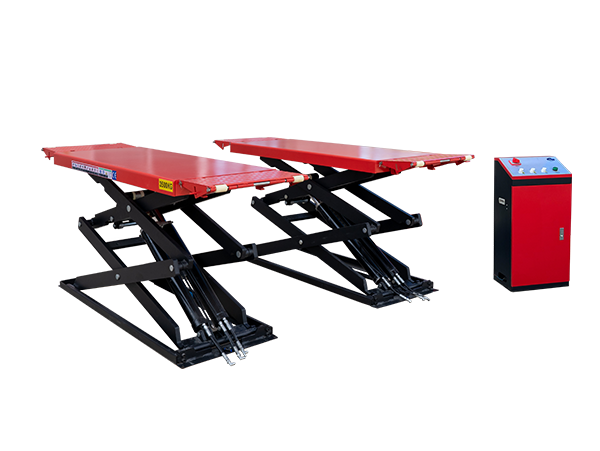2024.10.10
How to use the lift correctly?
Page view:570
When using a lift, you need to pay attention to the following steps:
Turn on the power switch: First press the rise button, the working platform should be able to rise normally. When the button is released, the work platform should be able to stop reliably.
Stop after rising to a certain height: hook up the working platform to ensure that the four hooks can be reliably hung on the hanging plate in the column. Only after the four hooks are completely removed from the plate can the reversing valve be turned to supply gas.
Please note that the following safety procedures must be followed when using a lift:
1. Before starting to use the lift, ensure that the power switch is on and the working platform can rise normally. When the rise button is pressed, the work platform should be able to rise reliably. Once the button is released, the work platform should stop immediately.
2. When the working platform rises to a certain height, hang the hook. Ensure that the four hooks can be reliably hung on the hanging plate inside the column to ensure safety. Do not turn the reversing valve until the four hooks are completely detached from the plate.
Please note that the above is the correct use of the lift. During the operation, be sure to ensure safety and follow the correct operating procedures to avoid any potential hazards.

To perform the following tasks on a monthly basis:
one Tighten anchor bolts, torque 150 Newton/m;
2. Check all joints, bolts or pins to ensure good connections;
3. Grease the slide, chain and wire rope;
4. Visual inspection of all hydraulic lines for wear and oil leakage;
5. Check that the safety mechanism is in good working order;
6. Lubricate all pulleys and pins with 90Wt gear oil;
Note: All anchor bolts need to bear normal torque. If a bolt cannot bear normal force, stop using the lift until a qualified bolt is replaced.
The following work is required every six months:
one Visually inspect all moving parts for possible wear, dryness and damage;
2. Check and adjust the tension of the wire rope according to the situation to ensure the parallel operation of the lift;
3. Check whether the column is perpendicular to the ground;
4. Check the rubber support pad and replace it if necessary;
5. Check whether the safety protection device is in normal working condition.
Wire rope inspection and maintenance:
All hoisting ropes should be replaced every 3 to 5 years, or when damage is visible. As long as the wire rope is properly maintained, the service life of the wire rope can be extended. For example, use 90Wt gear oil lubrication or wire rope lubricant to lubricate wire rope! These oils/lubricants go deep into the fibers to prevent damage. The lift is recommended to be lubricated every 3 months (4 times a year). At the same time, print the maintenance schedule and post it in the maintenance workshop to remind the next follow-up time at any time.
Every working day, as far as possible, any visible part of the wire rope should be observed in order to find damage and deformation. When the wear, broken wire, broken strand, rust, stretching, bending, deformation, fatigue, diameter, rope core exposure, etc. of the rope meet the replacement standards stipulated in the relevant regulations, please replace the new rope in time, otherwise it will face risks.
Regular maintenance can ensure the normal use of the lift, reduce the failure rate, extend the service life of the lift, so as to ensure the normal maintenance work.
